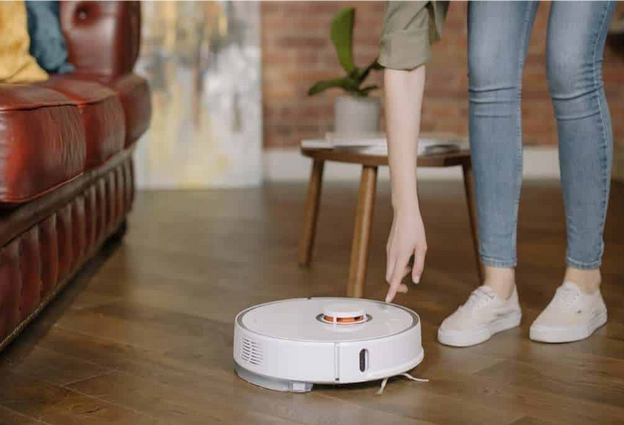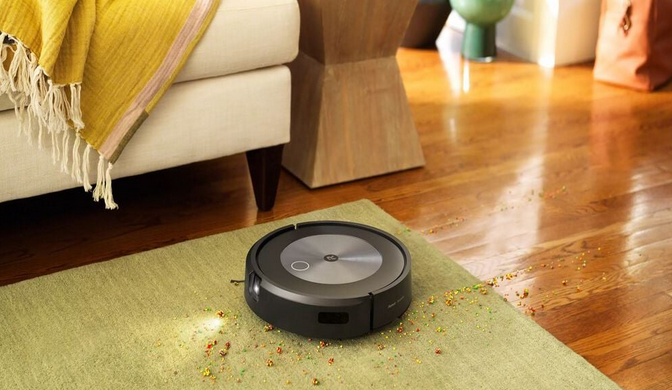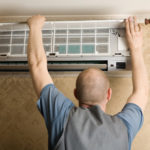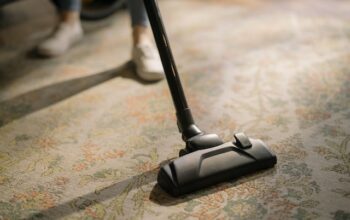The Roomba Vaccum is a compact, automated cleaner that uses advanced technology to clean your home. Choosing the right model can be a bit overwhelming with so many options available. To determine the best Roomba for you, it’s important to consider your specific cleaning needs and preferences.
This article covers all the basic info you need to know about robotic vacuums. 5 highly noted features are discussed in detail, with 3 working patterns. At last, you will be able to have a look into Roomba’s inside through a technical drawing.
Let’s get it started!
Factors to Look at While Shopping for a Robot Vacuum
A robotic vacuum is not a complete solution because everyone has different needs. It’s important to take your demands into account before making a purchase. Do you, for instance, live in a large, multi-story house? Do you have any beloved pets? Is your floor primarily bare or mostly covered in carpets? How much time do you spend at home?
To help you understand the many aspects of each Roomba, there are specific considerations that are most crucial to know about. Read below!
Check out this article: https://verywellhome.com/roomba-i2-vs-i3/
Suction Capacity
The other vacuums show numerical suction power measures while Roomba vacuums don’t use this method. They provide more generic statements like “5 times greater cleaning power” or “40 times higher suction power.”
You may choose which model is best for your needs by comparing each one to the others.
- A vacuum with greater suction power if you have pets that shed.
- If there is little to no visible dirt on your floor, a device with less cleaning power can be adequate.
Note: “Better cleaning performance is not guaranteed by suction alone.”
Cleaning Technique
For smaller spaces, like dorm rooms, Roomba vacuums utilize “multipass/random bounce,” and for bigger spaces, “vision-based navigation,” which enables the robot to move about and clean methodically. The first approach makes use of sensor data, while the second employs vSLAM technology.
Noise
Roombas make noise, just like all vacuums do. However, regular upright vacuums are typically noisier than Roombas. The Quiet Drive feature in these vacuum robots momentarily disables the vacuum motor while the robot goes between rooms or to and from its charging station. It is clarified that this reduces noise when the Roomba robot vacuum is not in operation.
Smart Features
Robot vacuums can be distinguished from one another by their software. Except for models 614 and 860, all of iRobot’s high-end Roombas operate on iRobot OS.
It is emphasized that the iRobot Home App gives users control over when, where, and how their home is cleaned by allowing them to manage and operate the vacuum using their phone or another device.
- The J Series can identify and avoid more than 80 everyday objects such as shoes, clothes, cables, backpacks, and solid pet waste.
- Roomba J, S, and I series have the Smart Mapping feature, which enables users to schedule cleaning for specific rooms or designate them as “no-go zones.”
- They can respond to over 600 voice commands through Alexa, Google Assistant, and Siri.
Upkeep
Since Roombas are a popular brand of robot vacuums, finding replacement components for them is not difficult, preserving their good condition over time. It is advised to routinely check and clean the rollers, regularly clean the air filters, and periodically clean the robot’s bottom-mounted sensors. This will maintain the Roomba’s peak performance.
How Does Roomba Vacuums Work
The term “vacuum cleaning robot” used by manufacturers, iRobot Corporation, is appropriate and accurate. Similar to the industrial robots that put automobiles together in factories, Roomba follows predetermined instructions but also possesses an underlying amount of “intelligence” that helps it choose what to do and how to do it.

Random bounce
Early models, like the 560, used a variety of cleaning modes, including sweeping quickly across the room to clean larger areas, and repeatedly going back to areas with high levels of dirt accumulation.
iRobot’s original trademark for the product states that the Roomba combines two different cleaning techniques, “wall following” and “random bounce”.
Wall Following
It involves the robot cleaning the room’s walls while using its side brush to reach into corners.
Random Bounce
The robot cleans the room until it hits an obstruction before moving off in a random direction.
Onboard Sensors
The Roomba has several onboard sensors to collect data about the room it is cleaning, much as how humans interact with the environment using their five senses.
- The device has a visible infrared beam and photocell sensor on the front.
- A plastic bumper with a built-in touch sensor is located underneath this.
- Roomba uses the infrared beam to detect walls and other obstacles, slowing down when it gets close to them.
- The Roomba is stopped by the touch sensor on the bumper if it makes contact with any things.
In addition, Roomba has infrared sensors underneath the machine that aim downward. These sensors enable Roomba to recognize what it refers to as “cliffs” or stairs and severe drops. It automatically stops its brushes from rotating and goes to a safer position if it notices that its brushes could tangle with cables or tassels.
Wi-Fi Connectivity
The newest Roomba models come with convenient Wi-Fi connectivity, enabling you to control and schedule cleaning sessions using a simple app on your smartphone or tablet, even when you’re not at home.
A Sneak Peek into Roomba’s Inside
Here is one of the technical drawings from the original Roomba patent from iRobot, which highlights some of the other essential parts. Things have been simplified and colored to make it a little clearer. Looking down at the top of the Roomba, we can see the infrared detector at the top and the dirt bin toward the bottom.
- Bumper with obstacle detection upfront.
- Infrared detector for a docking station and lighthouse communication.
- Wheel drop detector.
- Rechargeable lithium-metal hydride battery pack (14.4 volts and 3600mAH).
Note: “If you choose to replace it, you will need to remove several screws from the case because this is typically not visible.”
- Wheels with “knobby” treads offer more traction on smooth surfaces and assist keep carpet and rug tufts from catching in the wheels.
- Sub-assembly of wheels.
- The right wheel and the Vacuum are driven by an electric motor.
- For the dust bin’s removable handle.
- The left wheel is driven by an electric motor.
- Sub-assembly of wheels.
- Internal brush mechanism.
- Brushes are also powered by an electric motor.
Conclusion
The decision to purchase a Roomba largely depends on your personal preferences and needs. If you dislike manual vacuuming and enjoy technology, this automated cleaner can be a great investment for you. It offers hands-free cleaning and operates autonomously, freeing up your time for other tasks.
What are your views on Roomba? Share your feedback in the comment section below!
Related Posts

Loves home. I am here to provide how to make your home a much better place. 🙂 Blogging about HomeDecor, Home Improvements and more.











